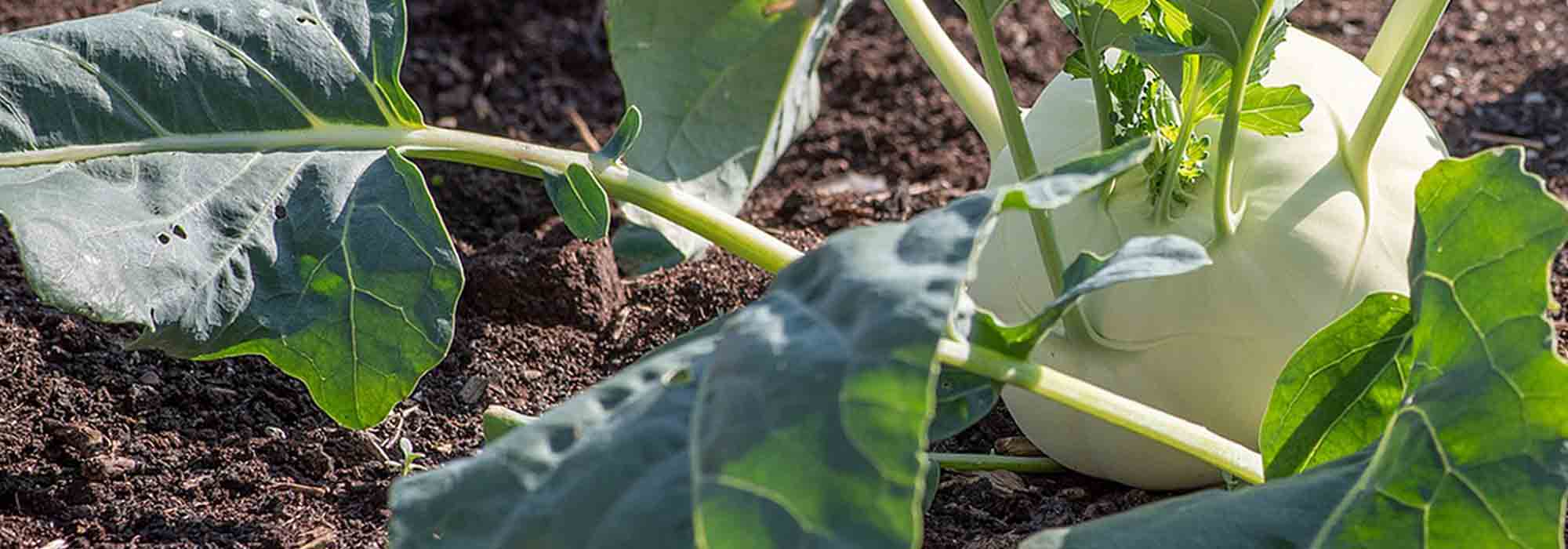
Root vegetables: 7 essential varieties
Best root vegetable varieties to grow
Contents
The term “root vegetable” actually encompasses in reality a very diverse range of vegetables originating from quite different families. They also display varied appearances. For simplicity, this type of vegetable includes varieties whose edible part is the underground portion. Note that their growing requirements are fairly similar, and that they generally withstand long periods of storage. Discover our selection of 7 essential varieties of root vegetables to grow in your vegetable patch!
Potato, essential root vegetable
Potato, Solanum tuberosum, is a root vegetable of the Solanaceae family that is indispensable in our vegetable gardens and French cuisine. A perennial grown as an annual, potato develops tubercle(s) with firm, floury or tender flesh depending on variety. The epidermis of the potato, like its flesh, can take different colours, from yellow to red, including pink and purple. Rich in fibre, vitamins and minerals, carbohydrates and proteins, it is eaten cooked in many preparations.
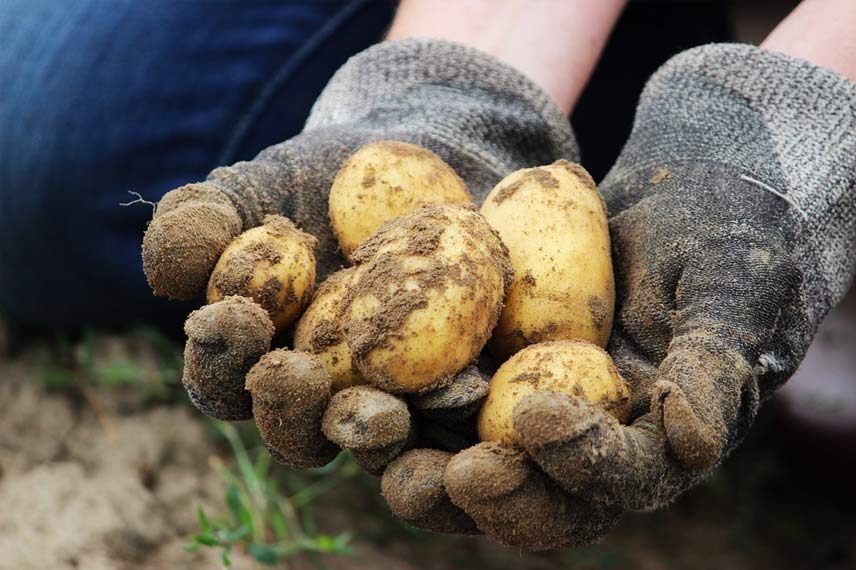
Growing it in the vegetable garden
Potatoes pre-sprouted under cover are planted in February for early potatoes, and from mid-March to May for other varieties, in soil at 10°C. Potato is grown in full sun, in rich deep soil enriched with well-rotted compost. It can be earthed up once or twice during its growth, or covered with a thick mulch. Watering is required in case of prolonged drought. Potatoes are harvested when foliage yellows, and store for several months in a cool, dry, well-ventilated and dark place.
Which variety to choose?
Grow the potato ‘Rosabelle’ for its tubercle(s) with red skin and tender, flavourful flesh.
If you love good chips, you cannot miss the potato ‘Bintje’, both soft and fluffy.
With its semi-firm flesh, the potato ‘Charlotte’ is a very productive variety suited to many cooking methods.
Don’t be put off by the knobbly look of the potato ‘Ratte’, its tubercle(s) have a fine-textured flesh with excellent flavour worth seeking out.
→ Learn all about potato in our complete fact sheet
Carrot, a root vegetable cultivated worldwide
Carrot, Daucus carota, is a herbaceous plant of the Apiaceae family and a root vegetable widely grown and consumed in France and worldwide. Its fleshy, elongated root presents an epidermis and flesh that can range from orange to purple, including yellow and red depending on the variety. During the second year of cultivation, carrot produces a flowering stem with small melliferous white flowers. Rich in vitamins (A, B6, K, B1, C, E, etc.) carrot is eaten cooked or raw in many dishes.
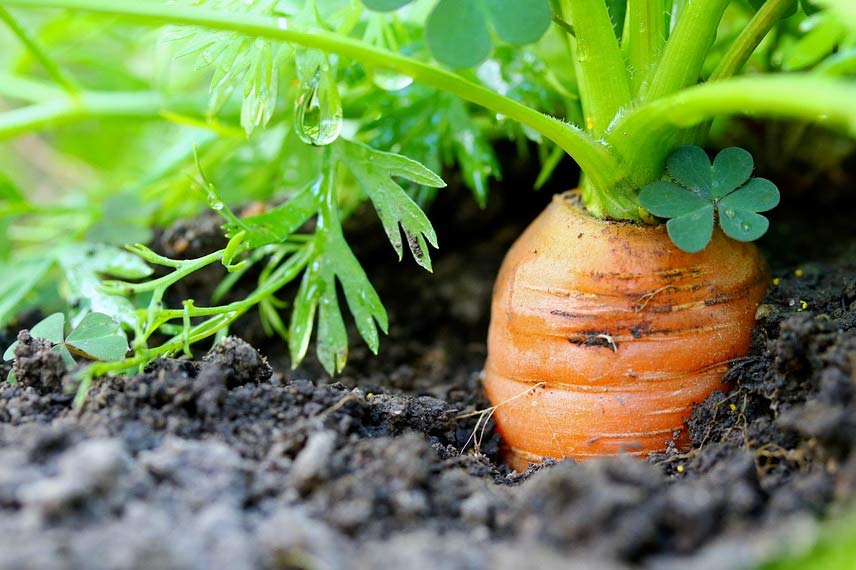
Growing in the vegetable garden
Biennial plant, carrot is sown in the vegetable garden from February, for a harvest running from summer through to autumn. Germination generally occurs about 25 days after sowing. Once germinated, young carrot plants should be thinned to one carrot every 5 cm. Apart from that, it requires no special care. Very hardy, carrots can be stored in the dark in dry sand.
Which variety to choose?
Opt for the very classic carrot ‘Touchon’ and its semi-long roots that are both tender and fresh, appealing to the widest audience.
Discover the carrot ‘Nanco’ which produces regular, cylindrical roots that are tender to the core.
Add colour to your plates with the carrot ‘Purple Elite’ with long dark-purple roots and sweet, tender flesh.
Choose an heirloom variety with the carrot ‘chantenay’, featuring semi-long, thick, conical and rounded roots.
Radish, a small root vegetable with a peppery bite
Radish, Raphanus sativus, is an annual or biennial root vegetable of the Brassicaceae family. There are three main categories, including all‑month radishes (small and pink), Rave radishes (large and black) and Daikons or Japanese radishes (white). Rich in vitamin C, phosphorus and magnesium, they are eaten raw with salt or cooked like turnips. Their pungent flavour is due to the sulphur they contain. Fresh greens can also be eaten, then used to flavour soups.
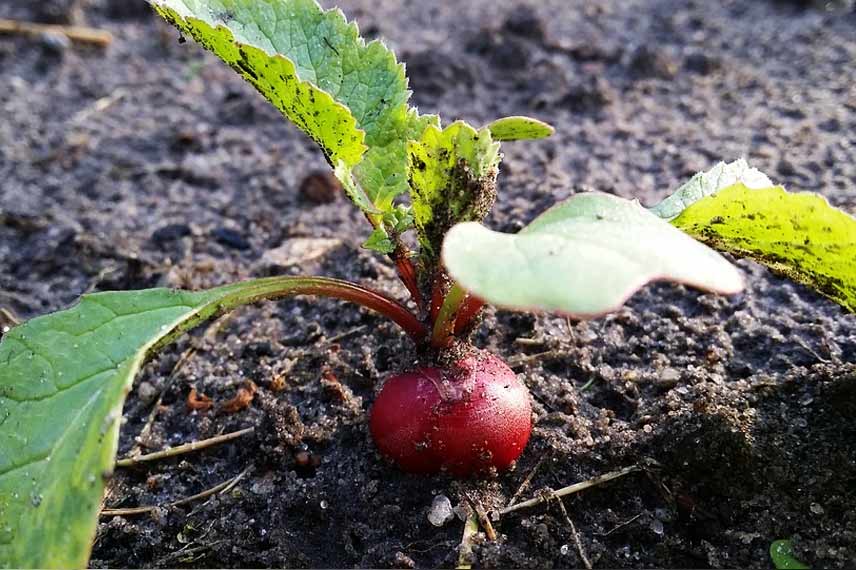
Growing in the vegetable garden
Radish cultivation is quite simple. It is usually grown in full sun, except in summer when a partly shaded position is preferable. Sow in fertile soil, but without fresh organic matter, and well drained. Light but regular watering is essential here, as is thinning. By staggering the sowings you will harvest radishes for much of the year.
Which variety to choose?
For an early spring harvest, grow ‘Kiva’ radish, the earliest variety that grows rapidly and offers excellent flavour.
Among the all‑month varieties resistant to hollowing, you will be charmed by ‘Flamboyant’ radish, scarlet red with a white tip.
‘Raxe’ radish is a versatile variety that produces tasty, attractive round roots of bright red.
For something more original, try ‘Zlata’ radish, a round variety with bright yellow skin and sweet, tender flesh.
Read also
Succeeding in carrot cultivationBeetroot, easy-to-grow root vegetable
Beetroot, Beta Vulgaris, is a root vegetable from the Chenopodiaceae family grown for its fleshy roots consumed cooked or raw, which contain slow-release carbohydrates, fibre, protein and vitamin B9. A biennial and hardy vegetable, it is harvested from the first year. While the best-known varieties have a red epidermis and flesh, white, yellow, orange or even pink-striate beetroot can also be found. Three main categories of beetroot exist: garden, sugar and fodder beetroot.
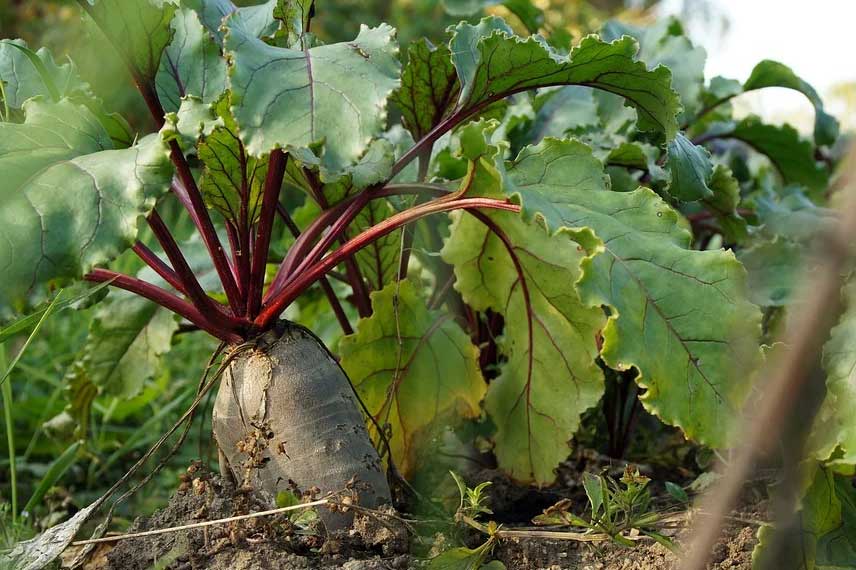
Growing in the vegetable garden
Easy to grow, beetroot particularly likes full-sun exposure and fresh, fertile soil. It is generally sown directly outdoors from mid-April to July, for harvest from July to October. At the five-leaf stage (10 cm high), beetroot should be thinned to one plant every 20 cm. Beetroot requires no particular care during cultivation, apart from regular hoeing and weeding.
Which variety to choose?
Be seduced by beetroot ‘Chioggia’, an original variety with bicolour flesh particularly appreciated by gourmets.
Bet on the taste qualities of an old, hardy variety such as beetroot ‘Crapaudine’ with deep red flesh.
Egyptian Black beetroot and its flat roots store particularly well over winter and benefit from easy cultivation.
Discover beetroot ‘Cylindra’, an old variety with long roots and a violet epidermis, and a mild, sweet flavour.
→ Find out more with our advice sheet Beetroot, the best varieties
Celeriac, detoxifying and antioxidant vegetable
The celeriac, Apium graveolens var. rapaceum, is a root vegetable from the family Apiaceae. It is grown for its fleshy root which offers a piquant flavour. Rich in vitamins, copper, iron and iodine, celeriac is known for its cleansing and antioxidant properties. Most often, celeriac root is eaten raw in salads, or as remoulade. It can also be eaten cooked in tomato sauce, sautéed, in gratin, mashed or in fritters. As for its foliage, it pleasantly flavours soups.
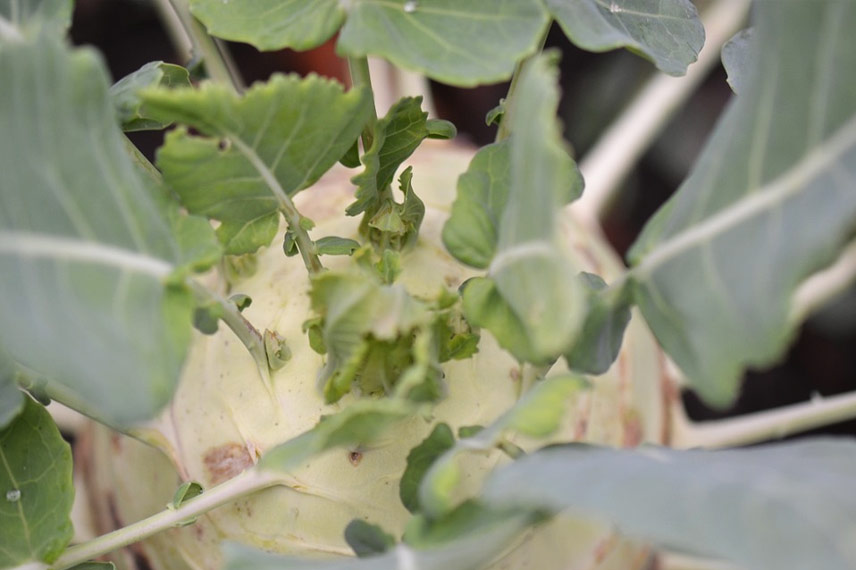
Growing in the vegetable garden
Easy to grow, celeriac is a hardy and robust plant. Sowing is carried out under heated cover between March and April for an autumn and winter harvest. Germination of celeriac is slow and requires warmth and moisture. The time from sowing to harvest is around 6 to 7 months. In the garden, plant celeriac in a sunny to partially shaded position, ensuring it is watered frequently and heavily.
Which variety to choose?
Opt for celeriac ‘Monarch’ with its round, sizeable root and fine, dense, firm white flesh.
‘Prague Giant’ is an old variety whose large regular root offers white, fleshy, crunchy flesh with a delicate flavour.
For an early harvest, choose the celeriac ‘Ibis’, which forms a round, smooth root with white flesh.
The celeriac ‘Alba’ is a hardy, very aromatic variety, with a fleshy root and a very delicate flavour.
Turnip, a root vegetable with a very delicate flavour
Turnip, Brassica rapa, is a vegetable plant from family Brassicaceae. It is grown for its globular root, medium to long, or even flat depending on variety. Turnip colour can range from white to black, including yellow, pink or purplish. Diuretic, refreshing, remineralising and rich in vitamins, turnip is prized for its very delicate flavour. It features in tasty dishes such as purées, confits and pot‑au‑feu. It pairs wonderfully well with other root vegetables, such as potato and carrot.
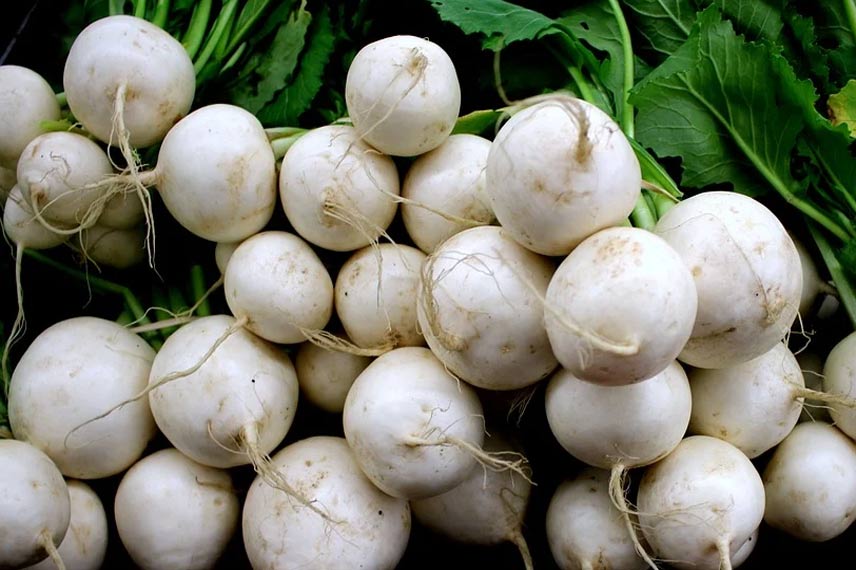
Growing in the vegetable garden
Easy to grow, turnip requires little maintenance, although weeding, hoeing and regular watering are necessary. These tasks can be reduced by applying a mulch. Regular watering remains nevertheless the key to a successful turnip crop. Summer turnips are sown between May and July, autumn and winter turnips are sown between July and August. Soil must be light, cool, rich and free of lime, and exposure should be sunny to partly shaded. Note that turnips are sensitive to frost, drought and exposures that are too hot and sunny in summer.
Which variety to choose?
Grow the turnip ‘Milan rouge’, an early variety that produces flattened roots with tender, sweet and flavoursome flesh.
Turnip de Croissy is a variety with medium‑long pointed roots, white skin and flesh, which can grow very large and offer a sweet, mild flavour.
An autumn variety, turnip de Nancy produces round roots with a pink collar that can be stored for a long time in ground, cellar or silo.
Grown for its taste qualities, yellow turnip ‘Boule d’Or’ is a heritage variety with beautiful bright yellow roots and sweet, firm, very aromatic flesh.
Kohlrabi, a root vegetable that deserves to be better known
Kohlrabi, Brassica oleracea var. gongylodes, is an underused root vegetable from family Brassicaceae. It is grown for its stem, which forms a fleshy, spherical swelling at its base, resembling a root. It is eaten raw for its chestnut-like flavour that pairs well with radish, but also cooked in gratin or glazed with honey, for its delicate taste similar to turnip. Rich in vitamins B9 and C, it is credited with preventive effects against cardiovascular disease.
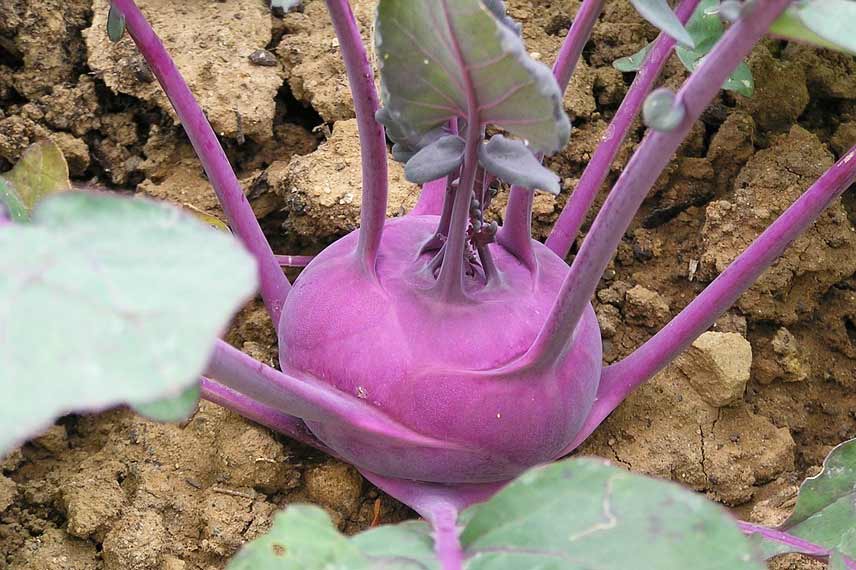
Growing in vegetable garden
Fond of wet, cool climates, kohlrabi is among the least demanding cabbages, although it requires soil enriched with compost or well-rotted manure. It is grown in deep, moist soil, in full sun or light shade. Kohlrabi is sown between March and mid-July depending on variety, and planted in garden between mid-April and late August, with harvest about 75 days on average after sowing. Weeding, hoeing and regular watering are necessary for it to thrive.
Which variety to choose?
Go for kohlrabi ‘Superschmelz’, a flavourful variety producing enormous bulbs weighing up to 10 kg.
‘Azur Star’, a variety with a slightly flattened round bulb, offers a magnificent purple colour and a tasty, rarely fibrous white flesh.
White Vienna kohlrabi is an early French variety producing white bulbs tinged with pale green, offering a delicate flavour and tender flesh.
- Subscribe!
- Contents
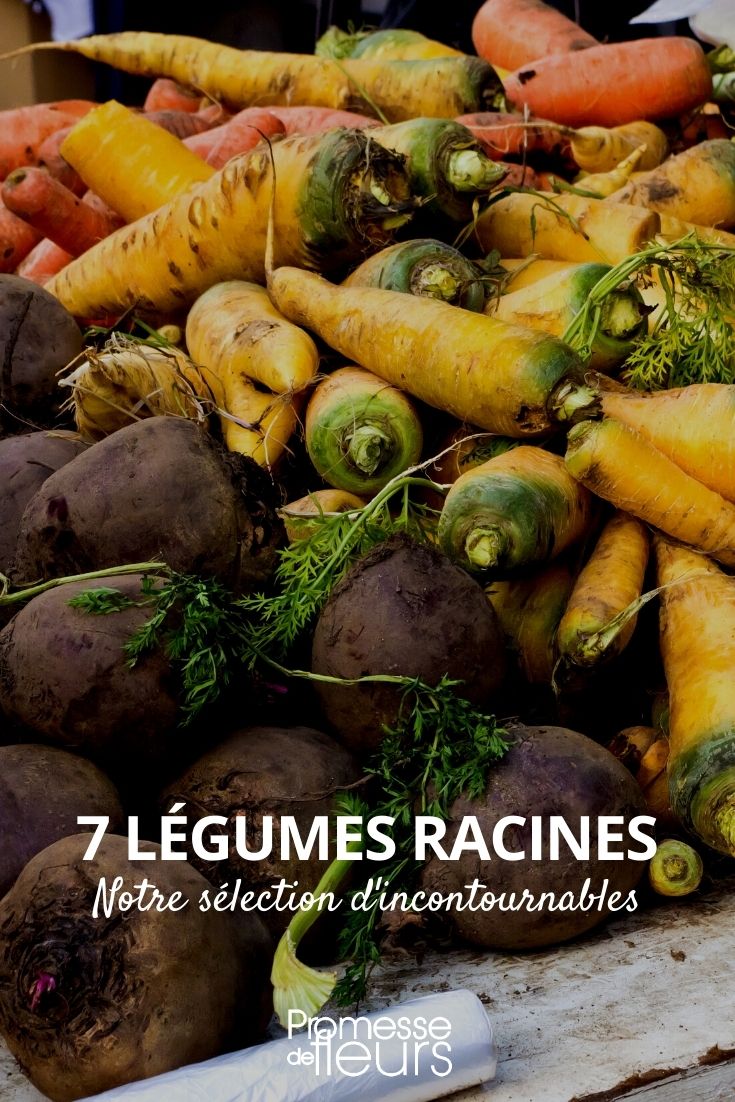































Comments